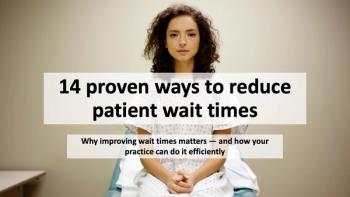
Reversing the decline in childhood vaccination rates with data analytics
Predictive analytics, patient stratification engines, and rules-based outreach campaigns have tremendous potential to right the ship.
Rural New England is dotted with small, quaint, antiquated cemeteries. A stroll through any of these historical areas reminds us of the scourge of childhood diseases that are now mostly vanquished. The smaller headstones list the names and ages of many babies and young children who died before reaching puberty.
From the 19th century into the first half of the 20th century, the United States did not have a full armamentarium of vaccines against measles, mumps, rubella, pertussis, smallpox, tetanus, or diphtheria, to name a few. The development of the vaccine has been the single greatest achievement of modern medical science.
The Covid-19 pandemic has brought the topic of vaccination back to the forefront. As the U.S. and the world await a safe and effective vaccine against Covid-19, another important subplot is developing: the falling vaccination rates for the nation’s babies, children, and teens.
Why are childhood vaccinations dipping right now?
There is a growing
Second, due to the perceived threat of potentially contracting Covid-19, the
Where do we start?
Predictive analytics, patient stratification engines, and rules-based outreach campaigns have tremendous potential to right the ship. Just as vaccine development had a tremendous impact on modern medical science, artificial intelligence and telehealth innovations are now making an equally important impact on healthcare.
The foundation for effective predictive analytics and rules-based outreach campaign is a patient data asset that is curated, updated, and accurate. Correctly inserting patient information into the health record has never been more important. Errors of omission (missing patients who need vaccines) and errors of commission (communicating with a patient who has already been vaccinated) could be highly problematic
Once you have a high-quality data asset, you can use that information to identify cohorts of high-risk patients–for example, children who need important vaccinations. Consider partnering with a trusted, reliable, and secure analytics vendor to aid in patient stratification. This is especially important for identifying children with pressing health concerns leaving them most vulnerable to contracting a virus and for those who live in rural, urban, or underserved communities.
Finally, with this data in hand, it’s time to orchestrate an outreach campaign to patient families using text messaging and e-mails sent directly to the patient’s parents or caregiver. Successful campaigns can be as simple as reminding the parent to contact their provider’s office for the needed vaccines and reiterating the security measures in place to help the patients feel safe enough to return to the office.
Most vendors can automate these functions, avoiding any additional work for the provider or office staff. Outreach campaigns can be easily customized to target high-risk cohorts first, or to spread messaging out over a number of weeks in an effort to smooth out the subsequent demand for vaccine-related appointments.
Additionally, rules-based outreach campaigns can also be used to share trusted, accurate scientific information from a provider to an entire population of patients. Students in most states cannot start school in person without proof of receiving all vaccinations. With many differing voices on the topic of vaccinations, it can be very helpful for parents to receive easy-to-understand messages from their providers reiterating the important role that vaccines play in protecting children and the most vulnerable in society from sickness and death.
Leave the past in the past
We hope to use vaccines to keep these infectious diseases in the past, but to do to that, we need to also get rid of old ways of thinking. Rules-driven, automated outreach programs, while new, have proven to substantially increase vaccination rates. As physicians, we are now able to reach our patients and their parents or caregivers through text messaging, a modern mode of communication that is familiar and comfortable to them. Technology offers us an opportunity of immeasurable value to prevent the outbreak of infectious diseases.
About the Author
Newsletter
Optimize your practice with the Physicians Practice newsletter, offering management pearls, leadership tips, and business strategies tailored for practice administrators and physicians of any specialty.








